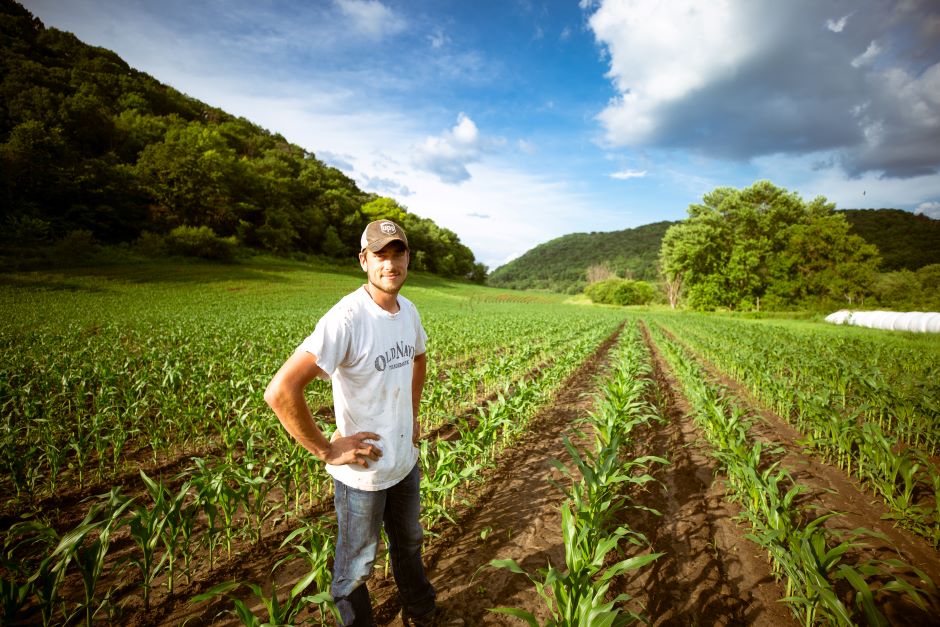Wildlife-caused crop damage results in hundreds of millions of dollars in annual losses for farmers each year. This can be pretty frustrating, especially for those who rely on their crops as a major source of income. The good news is that there are ways to remedy wildlife crop losses. You can do a variety of things, but the main methods are crop insurance, animal hazing, and hunting.
Hunting is the best method to reduce crop damage. It works by reducing local herd densities and therefore reducing animal impacts on crops. If you don’t hunt, then leasing your land to hunters is a great way to earn money and reduce crop-damaging wildlife populations on your property.
Crop depredation is a common issue that many farmers across the United States have to attend to. It isn’t limited to just one type of crop. Let’s learn a bit more about crop depredation and what can be done to reduce or even eliminate it!
What Is Crop Depredation?
Crop depredation is simply animals eating, trampling, or in some way destroying crops. Almost every commercial crop grown is subject to being destroyed by wildlife. A few examples of crop depredation are fruit being eaten from an orchard, wheat, soybeans, and corn being eaten and trampled, or young trees being damaged.
Many animals that cause crop depredation are game animals and can be legally hunted during specific seasons like whitetail deer, mule deer, elk, black bears, turkeys, and wild pigs.
The damage that these animals can do is extensive. A paper published by Sophie McKee and others in 2020 titled, “Estimation of wildlife damage from federal crop insurance data”, focused on only four crops in the United States. Using federal crop insurance data, the authors found that wildlife caused 592.6 million dollars in crop damage in 2017 across the United States.
The authors also found that farmers in the Eastern and Southeastern United States are most at risk of crop damage from wildlife. Among the four crops researched, (corn, soybean, wheat, and cotton) corn and soybeans had the highest dollar value of crop loss.

Turn a Financial Loss Into a Gain
Now that we know a little about wildlife crop depredation, we will discuss what can be done about it. The best method of reducing wildlife induced crop damage is hunting. Hunting works for the obvious reason of reducing the local species population like deer or elk. It also works because it can put hunting pressure on animals in the area.
Animals are smart. If they are constantly being harassed and killed on a property the remaining animals will likely leave. At the very least, their population will be reduced and therefore fewer crops will be destroyed. When hunting animals for crop depredation, where legal, it’s smart to focus on females. This way you are also reducing the current and future local population.
Depredation Tags
Landowners with crop depredation issues can contact their state wildlife department and apply for crop depredation tags. These tags are often easy to obtain but landowners need to meet specific state criteria to receive them. These criteria are usually focused on the amount of cropland that the individual owns.
Additionally, depredation tags can often be transferred to other individuals such as family and friends. They are usually extremely affordable and sometimes free. Landowners that hunt or allow hunting are in a win-win scenario. They get to harvest meat for their family while reducing crop damage on their land.
Leasing Land to Hunters
If landowners don’t have time to hunt themselves, but aren’t opposed to hunting, then leasing is a great option to reduce wildlife crop depredation. Leasing land to hunters is beneficial in two ways: Landowners can make money, often thousands of dollars, and crop damage will be reduced. Talk about killing two birds with one stone!
In addition, leasing land to hunters is ideal because the landowner gets to control everything. The landowner can decide their price and set their terms of use. These terms often include the amount of time hunters get to be on their property, areas that are off-limits, what species they can hunt, and more.
Other Methods of Reducing Crop Depredation
For landowners that don’t agree with hunting or leasing their land, there are other methods available for reducing crop damage. That said, we suggest all landowners strongly consider hunting or leasing their land to hunters before dismissing it. Hunting is the most profitable and least expensive method used to reduce crop depredation.
Hazing
Hazing wildlife is often a losing battle. One example of this is when my buddy was helping a fish and game agency by hazing elk from a field with a “Bird Banger” gun. The gun shoots off a firecracker round. The first few nights it worked and the elk left in a hurry, but it didn’t take long for the elk to figure out what was going on. After a few nights, they just stood staring at them.
There are other hazing methods as well, such as using motion-activated lights, stereos, and flagging. Realistically these methods won’t work for large acreages. The animals will figure them out and eventually show very little concern over them.
Fences
Fences can work for small fields, but they are very expensive to install, especially ones that are high enough to keep animals like deer out. A fence needs to be over 8 feet tall to reliably keep deer out. State agencies might be willing to split the cost, but this will likely be the last option because it is so expensive and labor-intensive.
Leases Just Make Sense
Crop depredation can be frustrating, but luckily there are ways to beat it. To us, hunting is the best method to deter and reduce populations of animals causing damage. If the landowner doesn’t hunt themselves, or even if they do, they can make money by leasing all or part of their land to hunters and make thousands of dollars in the process!


Leave A Comment